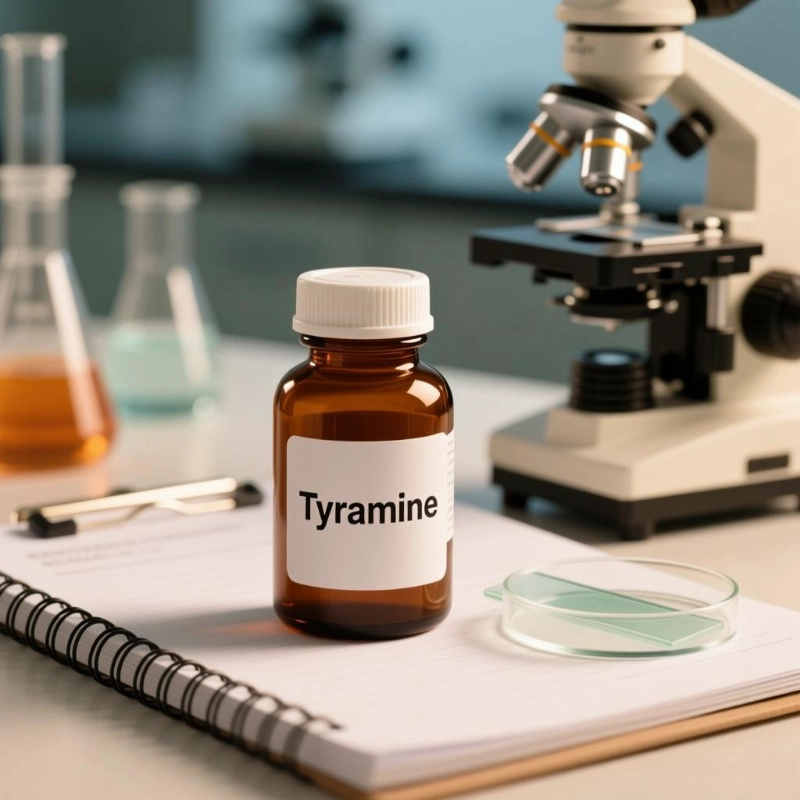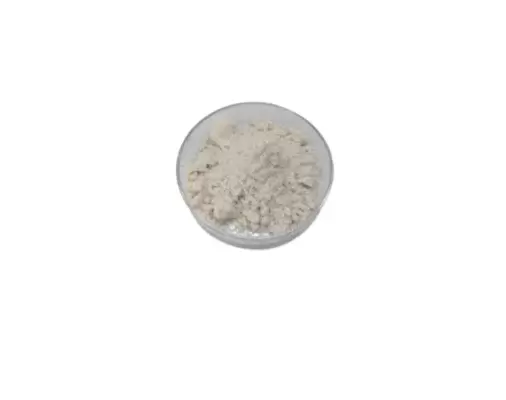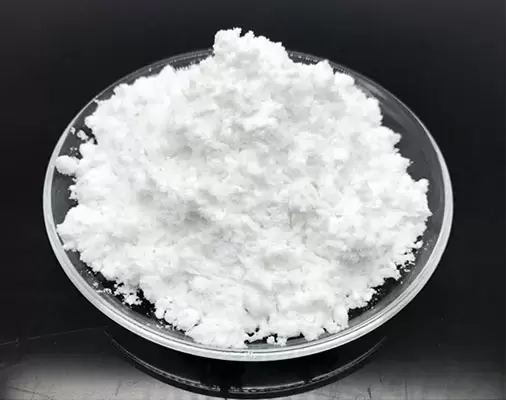Tyramine (CAS No.: 51-67-2) is a biogenic amine with remarkable pharmacological properties. Chemically known as 4-(2-aminoethyl)phenol, Tyramine is found in trace amounts in fresh proteins but occurs at higher concentrations in fermented foods. As a crystalline powder with a melting point of 334°C, it is only slightly soluble in methanol and DMSO, but shows stability under standard conditions. In this blog post, Viablife, a high purity biosynthetic raw materials manufacturer, will share key pharmaceutical intermediate Tyramine in organic drug synthesis and biochemical research.
Chemical Profile of High Purity Tyramine
Tyramine exists in the form of white needle-like crystals or crystalline powder, odorless with a bitter taste.

Applications Beyond Drug Development: Tyramine in Biochemical Research
Key pharmaceutical intermediate Tyramine has diverse applications outside conventional drug synthesis. In laboratory settings, it is used as:
* A raw material in the preparation of amino acid-based drugs and infusions.
* A nutritional additive capable of undergoing the Maillard reaction with sugars, contributing to flavor compound generation.
* A precursor in neurotransmitter synthesis, particularly dopamine and other catecholamines.
* A component in tissue culture media for research.
* A reagent in nitrogen determination for amino acid analysis.
Through these varied uses, Tyramine demonstrates versatility as both a chemical reagent and a biochemical research tool.
Evolution of Tyramine Production: From Chemical Synthesis to Biosynthesis
Traditionally, Tyramine was produced through conventional chemical synthesis. However, these processes often resulted in low conversion efficiency and significant environmental impact. Modern advancements have shifted focus to biosynthetic production methods, where fermentation techniques using renewable carbon sources provide a more sustainable and cost-effective solution.
Viablife now apply automated fermentation systems and advanced strain selection to ensure higher yields of Tyramine with consistent purity. This biotechnological approach not only enhances product quality but also supports the growing emphasis on green chemistry in pharmaceutical manufacturing.
Tips:How to choose Tyramine
* Particle uniformity, which ensures consistency in blending and flow properties.
* Purity levels, minimizing the risk of unwanted byproducts.
* Stability, reducing the risk of degradation during storage and application.
Conclusion
Key Pharmaceutical Intermediate Tyramine, though not a mainstream therapeutic agent, occupies a pivotal space in medicinal chemistry, biochemical research, and sustainable drug development. Its unique blend of chemical versatility, pharmacological potential, and adaptability in biosynthetic production ensures that Tyramine will remain a valued compound across industries.





 Leave a Message
Leave a Message